1932 Rolls-Royce 20/25HP Park Ward Saloon - barnfind project
Discussion
andyfeaver said:
Freeing the engine up is all part of the assessment process - and to make the eventual disassembly a little easier. I have no idea on the condition of the head (one of the main weaknesses of this engine) and, while it is apart, should I get hardened valve seats fitted etc to allow for modern petrol? Some 20/25 R-R owners I have spoken to have not done so, relying on fuel tank additives to protect their engines.
All good problems to solve! :-)
Take care,
AF
This is interesting. I was led to believe, somewhere down the line, that these engines are too lazy to require hardened valve seats. That lead free petrol wouldn't be a concern. Now I'd better look a bit further into it! All good problems to solve! :-)
Take care,
AF
Lord Flashheart said:
This is interesting. I was led to believe, somewhere down the line, that these engines are too lazy to require hardened valve seats. That lead free petrol wouldn't be a concern. Now I'd better look a bit further into it!
Lord Flashheart - just to allay your concerns re fuel. From the reading I have done this afternoon (beer in hand, sat in the sunshine in the garden!), it seems that you are quite right. Key things are:- Keep an eye on the valve clearances
- Use 97/98 octane fuel (E5 protection grade) - to avoid the effects of E10 on cars which are not run everyday
- Additives can help - Castrol Valvemaster was tested by the FBHVC as being fit for purpose.
For some more detailed reading, here is the former head of engines at Rolls Royce on the effects of lead in fuel:
https://rroc.org.au/library/unleaded/kelee.html
It will be many months before this becomes an issue for me... but in a roundabout way, it has clarified some aspects of the engine rebuild re: valve seats for modern fuel. :-)
AF
andyfeaver said:
Lord Flashheart said:
This is interesting. I was led to believe, somewhere down the line, that these engines are too lazy to require hardened valve seats. That lead free petrol wouldn't be a concern. Now I'd better look a bit further into it!
Lord Flashheart - just to allay your concerns re fuel. From the reading I have done this afternoon (beer in hand, sat in the sunshine in the garden!), it seems that you are quite right. Key things are:- Keep an eye on the valve clearances
- Use 97/98 octane fuel (E5 protection grade) - to avoid the effects of E10 on cars which are not run everyday
- Additives can help - Castrol Valvemaster was tested by the FBHVC as being fit for purpose.
For some more detailed reading, here is the former head of engines at Rolls Royce on the effects of lead in fuel:
https://rroc.org.au/library/unleaded/kelee.html
It will be many months before this becomes an issue for me... but in a roundabout way, it has clarified some aspects of the engine rebuild re: valve seats for modern fuel. :-)
AF
Hello all,
After a bit of a pause, it is certainly time to update the thread. This one is entitled "Take your first estimate and double it".
I'd got to the point where most things were now superficially clean and I was able to work out what was missing and what wasn't. One of the main tasks had been to tidy up the engine bay and identify if anything more was missing than the horn, the spark plugs and the intake and exhaust manifolds. While cleaning the side of the block, I felt something move under my hand - to my dismay it was the rocker cover. On removal of the rocker cover - which was missing its fixing nuts, the scale of the challenge just got a lot bigger. Can you see what is missing in the picture below?
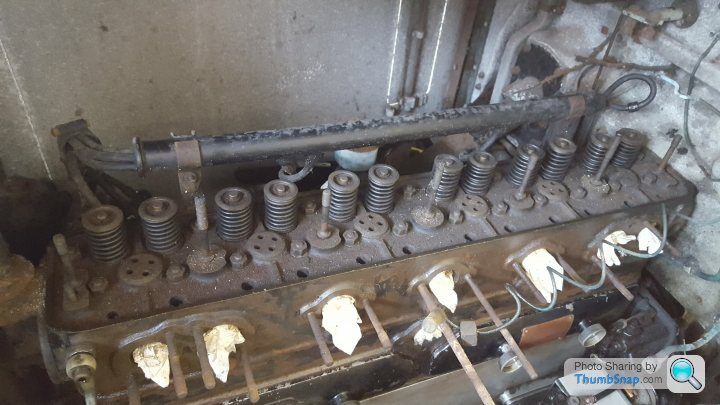
So that was the rocker shaft, rockers and pushrods which appeared to be AWOL - just to add to the list. Whilst I was more than a touch frustrated, I held out hope that these parts were still in the pile of "spares" which had been listed in the original sale listing. After some to-ing and fro-ing, I eventually got the chance to go down to collect the spares and negotiate the purchase of a spare engine, axles and other assorted parts from the previous owner.
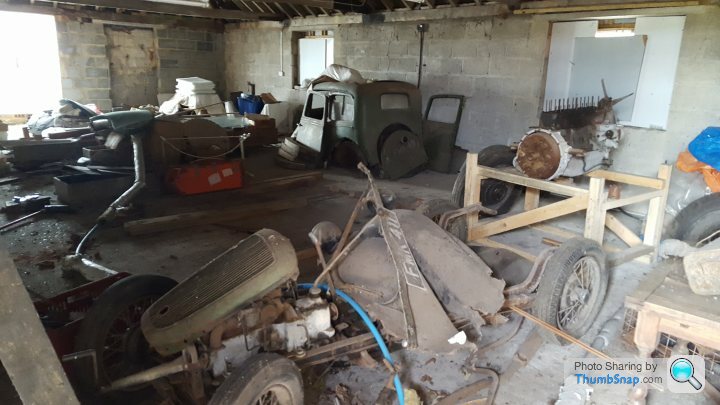
The hunt for the spares was in a range of barns where the Rolls-Royce has sat languishing for the best part of 50 years. Spread over 3 different buildings, I was able to find quite a bit of the missing original trim - again suitable for making patterns, as well as a number of important and difficult to find chromed parts. The spare engine was on a makeshift wooden stand and the front and rear axles needed dragging out into the sunlight. Overall, it was very worthwhile and I have to admit that it was a great day out!
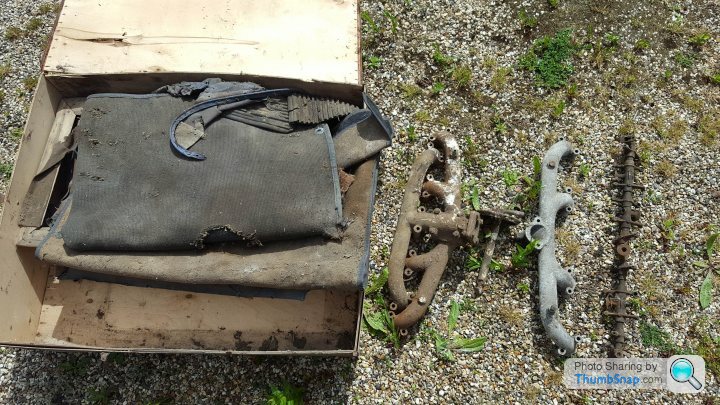
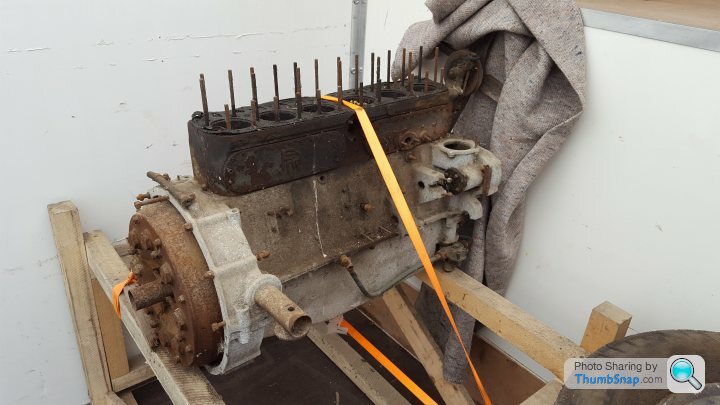
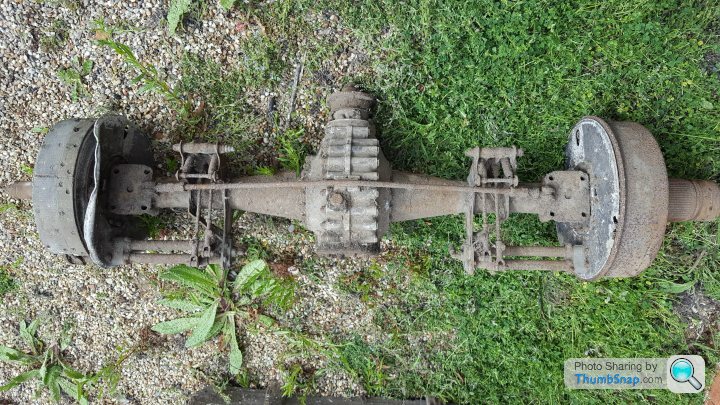

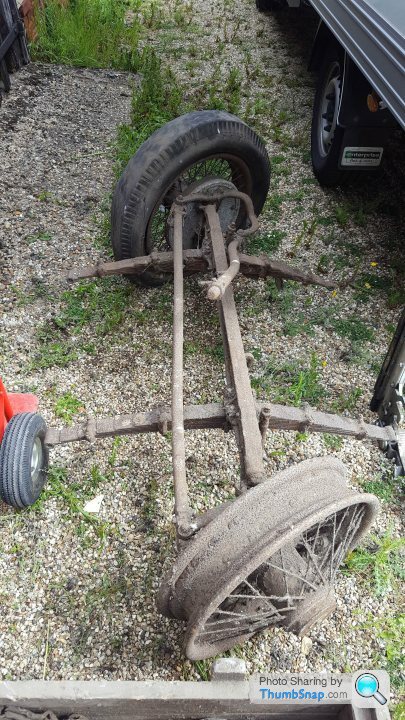
When I got home I set about working out exactly what I had recovered. I started with the engine and cleaned off the engine number stamping on the block - was that Q7P or O7P? I consulted the books and worked out that the likely 20/25 candidate was a car - chassis number GDP68 - which had last been seen in 1976. The RREC forum were extremely helpful in guiding me to find other ways of identifying the parts, and one idea raised was that the engine stamp was in fact O7P - and this related to an earlier 1929 20HP Rolls-Royce - GLN76. This car was deemed to be a "lost" car by the RREC 20HP register, as they had no record of it all in the post war era.
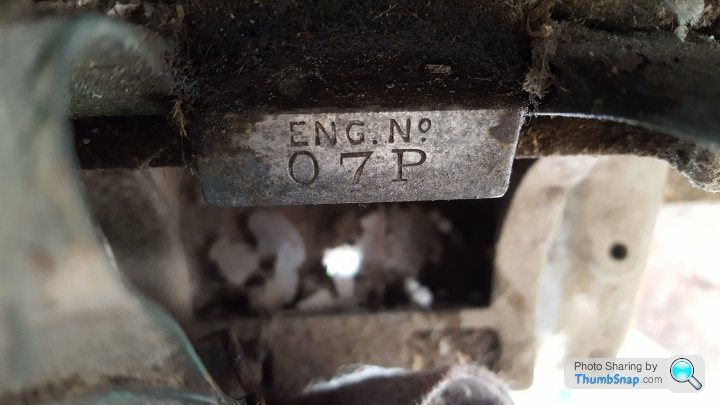
After much cleaning and checking, and with the help of the Archive team at the RREC, as well as RREC forum members, I was able to confirm that the engine and steering column recovered were definitely from the "lost" 20HP car - to give it it's full details, from the factory chassis cards:
- a 1929 20HP, chassis number GLN76, "NB" series, engine number 07P, registration UR3633, off test 01.03.1929, originally fitted with a 4 door Hooper saloon body (dark blue and black, with fine blue line and blue leather, with division).
- It was sold new to Mr W N Watson by the Aylesbury Motor Co. It returned to the works on a number of occasions before being sold as a "complete car, as it stands, the whole in used condition" to a Mr J Compton in June 1937 for £170. Mr W N Watson was allowed £150 in part payment for GRO35 (25/30HP).
- the last entry in the works records is for the sale of a decarbonising kit in November 1937 to Mr Compton... the trail goes cold beyond here, for now.
So it would seem that I had bought the mortal remains of a 20HP car which had not been heard of for 85 years! This was very exciting, but it posed a couple of major questions. So these spares which had been bought were not actually suitable for my 20/25 AND where was the head of the spare engine? - had this been part fitted to my own car, perhaps in error, when the spares were bought by the previous owner's father?
More digging ensued - and yes - the 20HP cylinder head (O7P) had been fitted to my 20/25!!!!!!!!!
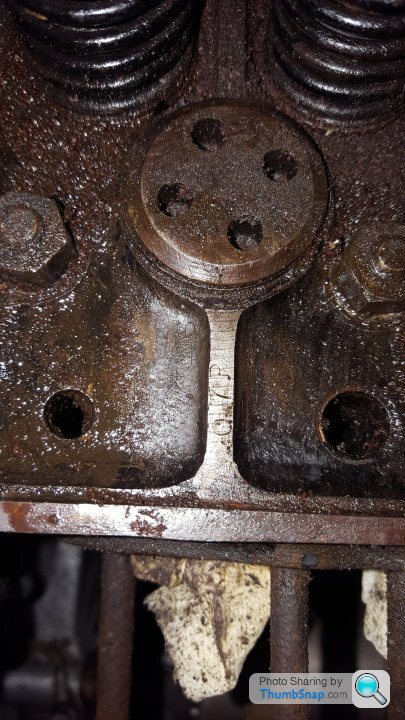
Taking stock, the last couple of months have given:
- a whole "new" project - the restoration of a previously unknown 1929 20HP - but this is a major challenge as I only have the engine, axles and some of the smaller items for the chassis - no chassis itself or any bodywork. If anyone knows of a standard short 20HP chassis in need of a home - please let me know!
- a significant increase in the scope of the rebuild of the 20/25. It will need a new cylinder head - which are available, in aluminium, for a cool ~ £6550, as well as many of the other missing internal parts.
One small positive step forwards has been the agreement for the sale of my beloved XJS - this will free up much needed space to allow the rebuild of the 20/25 to really get beyond the cleaning up/sorting out stage. I will be sad to see it go, but it looks like it is going to a very good home.
As I said at the start of this thread update, with any project such as this, you always have to take your first estimate (of cost, time - or now in this case - number of vehicles involved) and double it!
:-)
Take care,
AF
After a bit of a pause, it is certainly time to update the thread. This one is entitled "Take your first estimate and double it".
I'd got to the point where most things were now superficially clean and I was able to work out what was missing and what wasn't. One of the main tasks had been to tidy up the engine bay and identify if anything more was missing than the horn, the spark plugs and the intake and exhaust manifolds. While cleaning the side of the block, I felt something move under my hand - to my dismay it was the rocker cover. On removal of the rocker cover - which was missing its fixing nuts, the scale of the challenge just got a lot bigger. Can you see what is missing in the picture below?

So that was the rocker shaft, rockers and pushrods which appeared to be AWOL - just to add to the list. Whilst I was more than a touch frustrated, I held out hope that these parts were still in the pile of "spares" which had been listed in the original sale listing. After some to-ing and fro-ing, I eventually got the chance to go down to collect the spares and negotiate the purchase of a spare engine, axles and other assorted parts from the previous owner.

The hunt for the spares was in a range of barns where the Rolls-Royce has sat languishing for the best part of 50 years. Spread over 3 different buildings, I was able to find quite a bit of the missing original trim - again suitable for making patterns, as well as a number of important and difficult to find chromed parts. The spare engine was on a makeshift wooden stand and the front and rear axles needed dragging out into the sunlight. Overall, it was very worthwhile and I have to admit that it was a great day out!





When I got home I set about working out exactly what I had recovered. I started with the engine and cleaned off the engine number stamping on the block - was that Q7P or O7P? I consulted the books and worked out that the likely 20/25 candidate was a car - chassis number GDP68 - which had last been seen in 1976. The RREC forum were extremely helpful in guiding me to find other ways of identifying the parts, and one idea raised was that the engine stamp was in fact O7P - and this related to an earlier 1929 20HP Rolls-Royce - GLN76. This car was deemed to be a "lost" car by the RREC 20HP register, as they had no record of it all in the post war era.

After much cleaning and checking, and with the help of the Archive team at the RREC, as well as RREC forum members, I was able to confirm that the engine and steering column recovered were definitely from the "lost" 20HP car - to give it it's full details, from the factory chassis cards:
- a 1929 20HP, chassis number GLN76, "NB" series, engine number 07P, registration UR3633, off test 01.03.1929, originally fitted with a 4 door Hooper saloon body (dark blue and black, with fine blue line and blue leather, with division).
- It was sold new to Mr W N Watson by the Aylesbury Motor Co. It returned to the works on a number of occasions before being sold as a "complete car, as it stands, the whole in used condition" to a Mr J Compton in June 1937 for £170. Mr W N Watson was allowed £150 in part payment for GRO35 (25/30HP).
- the last entry in the works records is for the sale of a decarbonising kit in November 1937 to Mr Compton... the trail goes cold beyond here, for now.
So it would seem that I had bought the mortal remains of a 20HP car which had not been heard of for 85 years! This was very exciting, but it posed a couple of major questions. So these spares which had been bought were not actually suitable for my 20/25 AND where was the head of the spare engine? - had this been part fitted to my own car, perhaps in error, when the spares were bought by the previous owner's father?
More digging ensued - and yes - the 20HP cylinder head (O7P) had been fitted to my 20/25!!!!!!!!!

Taking stock, the last couple of months have given:
- a whole "new" project - the restoration of a previously unknown 1929 20HP - but this is a major challenge as I only have the engine, axles and some of the smaller items for the chassis - no chassis itself or any bodywork. If anyone knows of a standard short 20HP chassis in need of a home - please let me know!
- a significant increase in the scope of the rebuild of the 20/25. It will need a new cylinder head - which are available, in aluminium, for a cool ~ £6550, as well as many of the other missing internal parts.
One small positive step forwards has been the agreement for the sale of my beloved XJS - this will free up much needed space to allow the rebuild of the 20/25 to really get beyond the cleaning up/sorting out stage. I will be sad to see it go, but it looks like it is going to a very good home.
As I said at the start of this thread update, with any project such as this, you always have to take your first estimate (of cost, time - or now in this case - number of vehicles involved) and double it!
:-)
Take care,
AF
Edited by andyfeaver on Thursday 9th June 13:42
Hello all,
Time for another update, following a successful couple of weeks. This one is entitled "End of the Beginning..."
The last post focussed on the haul of spares which I had recovered from a number of barns in Essex, which were hopefully going to solve some of the missing parts issues on the car. As I found out, it was very much a mixed bag - as well as lots of small and important parts of the 20/25, I also collected the mortal remains of an earlier 20HP car. This is now its own project and has its own thread.... but as you can imagine, the challenge of sifting through boxes of parts trying to determine what belongs to what! I now have 3 piles of parts - those that are definitely 20/25, those that are definitely 20HP and then a small pile in the middle, where I can't work out what they are!
Using what I had for the 20/25, I was now in a position to finish off the assessment stage of the project. Anything which was now missing was genuinely "lost" and would need to be added to the missing parts list. I also wanted to ensure that the car was as well preserved as possible, so that it can be safely stored without any further deterioration while different aspects of the restoration are underway.
One of the key ways of ensuring this, my learned vintage Rolls-Royce experts tell me, is to ensure that the "Luvax Bijur Chassis Lubrication System" is working. To those of us more used to more modern classics, this system is an oddity. It comes from a time where most sliding joints were oil, rather than grease, lubricated and worked on a "total loss" principle. Modern sealing and the desire to stop oil dropping onto the road were not yet in fashion. The lovely colour diagram below shows how oil is pumped around the chassis to all of the major systems, via the operation of the foot operated pump.
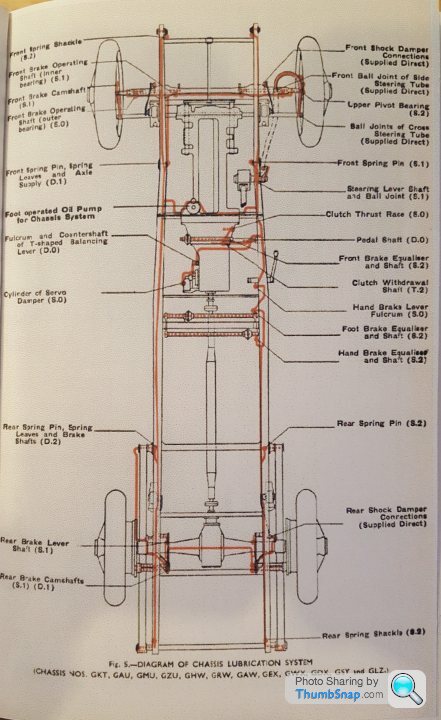
I cleaned up the oil tank mounted on the engine bay side of the front bulkhead, soaked the filter to make it presentable and tentatively filled the tank with oil. Amazingly the pump appeared to seal and after a dozen or so pumps I was getting the tell-tale drop-drop and weep of oil at a number of the oiling points. This was real progress and felt like I had almost got the car's blood pumping again. More cleaning and working on stuck components showed oil now reaching pretty much all of the chassis - the main exception being the front axle.
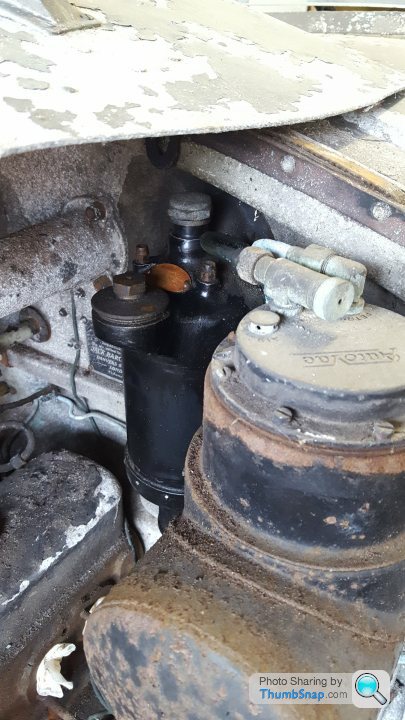
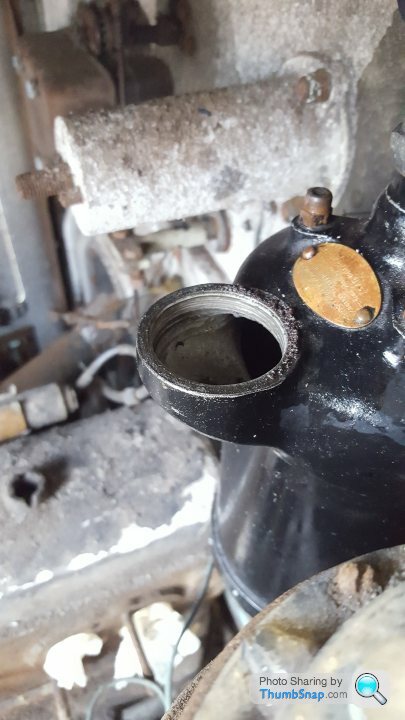
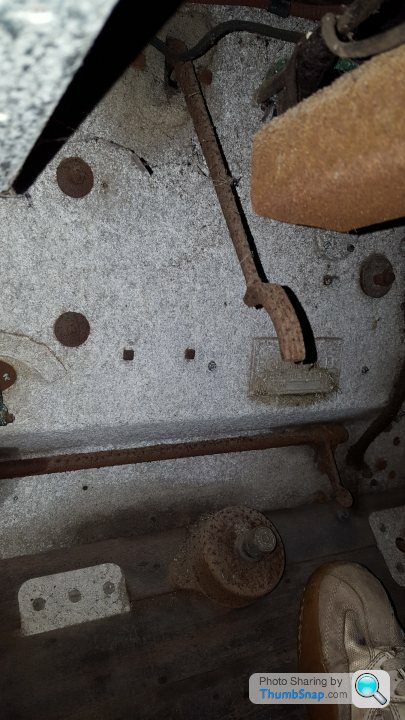
Here it was clear something was missing - there was an exposed oil fitting, but no oil pipe to feed it. Reading more about the system, it seemed that the oil supply pipe should have run down the inside of the LH front road spring. I searched through my piles of spares and, sure enough, I found the oil pipe, complete with banjo fitting on the end. The only downside was that the pipe was incomplete.... The team at Fiennes (who I cannot speak highly enough of) were excellent at helping me to work out what was missing and I made up a new brass oil supply pipe to replace the damaged one. On removing the original, it would appear that one of the previous owners had some issue with it and simply crushed it closed to prevent unwanted leaks!
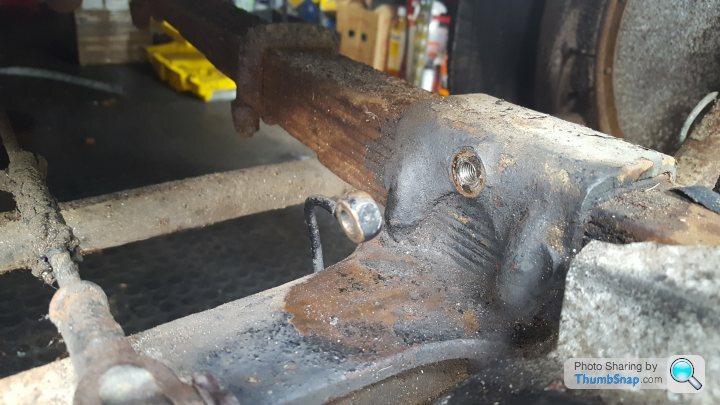

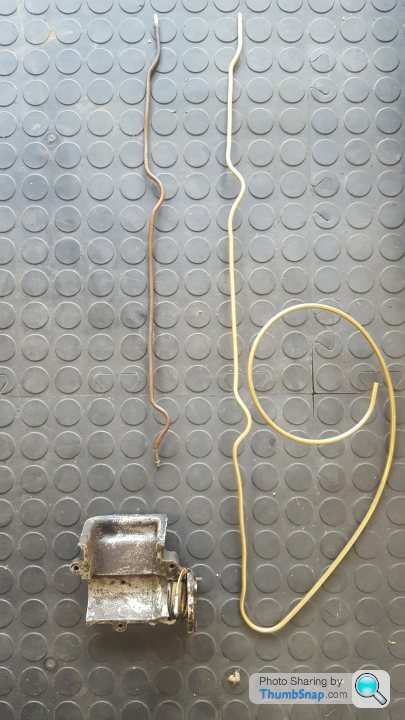

With the oil supply pipe reinstalled, a few more pumps got oil flowing to the front axle - now were were getting somewhere. So I turned my attention to the rear axle, rear brakes and propshaft - with the germ of an idea forming to get the car back onto its wheels and moveable as a rolling chassis. The differential was easy enough - drain out the dregs of treacle coloured oil, flush with non EP SAE90 gear oil and then refill. It turned over beautifully smoothly. For the propshaft, oiling of both the upper and lower joints freed this off nicely too. The rear brakes (both foot and handbrake) were a bit more stubborn, but the same principles applied - remove, clean, relube where required - and they were operational again.
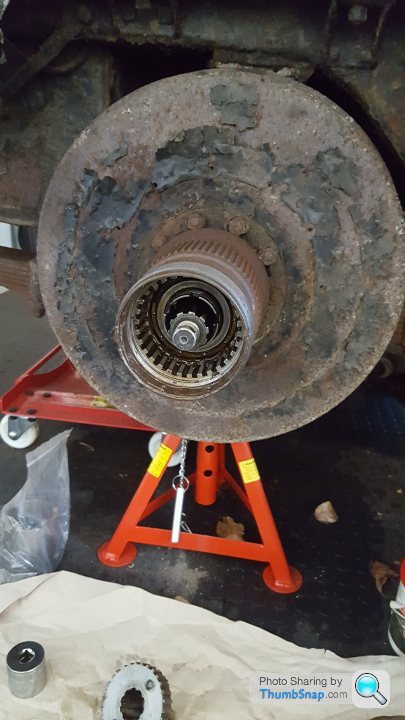
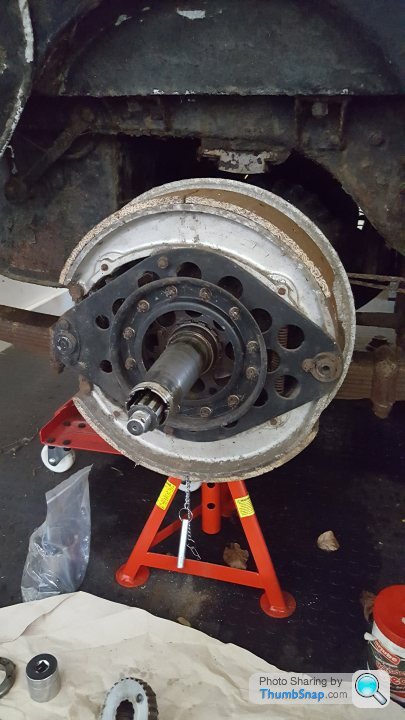
To complete the plan of getting the car back onto its wheels, I would need to invest in some more inner tubes and hope that I could get the very ancient tyres off the rims. After much sweat and tears (and some choice bad language), 2 new inner tubes were in place and all five tyres (inc the spare) had air in them.
Sunday morning arrived bright and sunny and seemed like the perfect day for getting the car outside. It would also provide a great opportunity to clean the garage out too - it was now filthy from the clean up process on the car so far. The added bonus was that the car's previous owner was also coming round to drop off a couple more parts which had been found, and I hoped that it would be a nice surprise for him to see his father's car back on its wheels again.
I lowered the car off the axle stands and with my wife kindly volunteering to be the driver, I pushed the car out into the sunshine. It rolled very easily and both the foot and handbrake worked a treat.

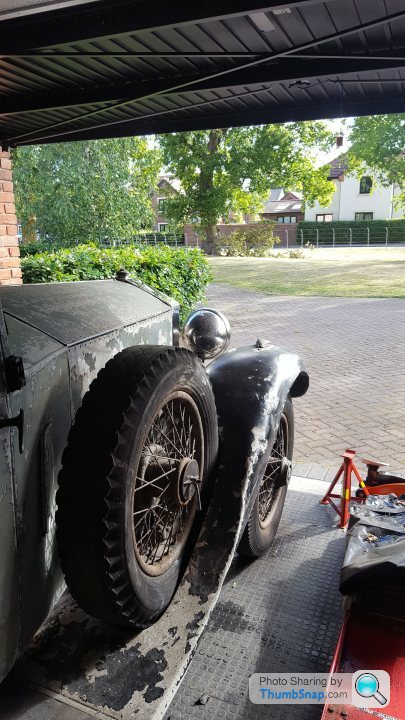

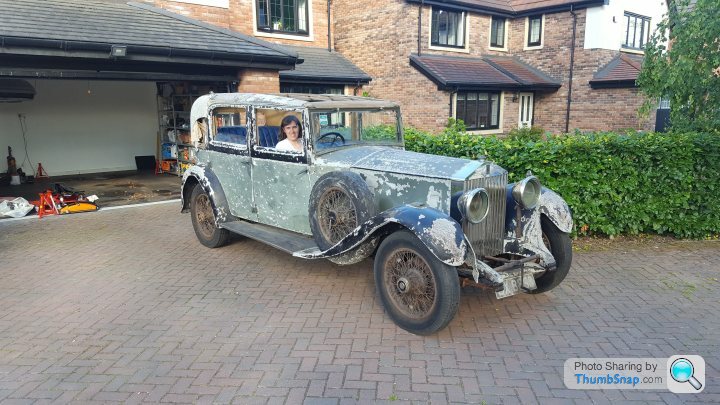
The car's previous owner was very pleased to see the progress to date and it gives an opportunity to reflect a bit on what has been achieved so far. The car has been thoroughly cleaned and I have gone through it to check its history and condition. Everything now opens / closes / works and is protected for future work and restoration. The list of missing and required replacement parts is pretty much complete, as is the list of sensible upgrades which I will add to it to make it more useable in modern traffic. From here, it will be a detailed strip, restore and rebuild plan, along with some sizeable budget planning. But all that is for tomorrow, now it is just about admiring the view.....

Take care,
AF
Time for another update, following a successful couple of weeks. This one is entitled "End of the Beginning..."
The last post focussed on the haul of spares which I had recovered from a number of barns in Essex, which were hopefully going to solve some of the missing parts issues on the car. As I found out, it was very much a mixed bag - as well as lots of small and important parts of the 20/25, I also collected the mortal remains of an earlier 20HP car. This is now its own project and has its own thread.... but as you can imagine, the challenge of sifting through boxes of parts trying to determine what belongs to what! I now have 3 piles of parts - those that are definitely 20/25, those that are definitely 20HP and then a small pile in the middle, where I can't work out what they are!
Using what I had for the 20/25, I was now in a position to finish off the assessment stage of the project. Anything which was now missing was genuinely "lost" and would need to be added to the missing parts list. I also wanted to ensure that the car was as well preserved as possible, so that it can be safely stored without any further deterioration while different aspects of the restoration are underway.
One of the key ways of ensuring this, my learned vintage Rolls-Royce experts tell me, is to ensure that the "Luvax Bijur Chassis Lubrication System" is working. To those of us more used to more modern classics, this system is an oddity. It comes from a time where most sliding joints were oil, rather than grease, lubricated and worked on a "total loss" principle. Modern sealing and the desire to stop oil dropping onto the road were not yet in fashion. The lovely colour diagram below shows how oil is pumped around the chassis to all of the major systems, via the operation of the foot operated pump.

I cleaned up the oil tank mounted on the engine bay side of the front bulkhead, soaked the filter to make it presentable and tentatively filled the tank with oil. Amazingly the pump appeared to seal and after a dozen or so pumps I was getting the tell-tale drop-drop and weep of oil at a number of the oiling points. This was real progress and felt like I had almost got the car's blood pumping again. More cleaning and working on stuck components showed oil now reaching pretty much all of the chassis - the main exception being the front axle.



Here it was clear something was missing - there was an exposed oil fitting, but no oil pipe to feed it. Reading more about the system, it seemed that the oil supply pipe should have run down the inside of the LH front road spring. I searched through my piles of spares and, sure enough, I found the oil pipe, complete with banjo fitting on the end. The only downside was that the pipe was incomplete.... The team at Fiennes (who I cannot speak highly enough of) were excellent at helping me to work out what was missing and I made up a new brass oil supply pipe to replace the damaged one. On removing the original, it would appear that one of the previous owners had some issue with it and simply crushed it closed to prevent unwanted leaks!




With the oil supply pipe reinstalled, a few more pumps got oil flowing to the front axle - now were were getting somewhere. So I turned my attention to the rear axle, rear brakes and propshaft - with the germ of an idea forming to get the car back onto its wheels and moveable as a rolling chassis. The differential was easy enough - drain out the dregs of treacle coloured oil, flush with non EP SAE90 gear oil and then refill. It turned over beautifully smoothly. For the propshaft, oiling of both the upper and lower joints freed this off nicely too. The rear brakes (both foot and handbrake) were a bit more stubborn, but the same principles applied - remove, clean, relube where required - and they were operational again.


To complete the plan of getting the car back onto its wheels, I would need to invest in some more inner tubes and hope that I could get the very ancient tyres off the rims. After much sweat and tears (and some choice bad language), 2 new inner tubes were in place and all five tyres (inc the spare) had air in them.
Sunday morning arrived bright and sunny and seemed like the perfect day for getting the car outside. It would also provide a great opportunity to clean the garage out too - it was now filthy from the clean up process on the car so far. The added bonus was that the car's previous owner was also coming round to drop off a couple more parts which had been found, and I hoped that it would be a nice surprise for him to see his father's car back on its wheels again.
I lowered the car off the axle stands and with my wife kindly volunteering to be the driver, I pushed the car out into the sunshine. It rolled very easily and both the foot and handbrake worked a treat.




The car's previous owner was very pleased to see the progress to date and it gives an opportunity to reflect a bit on what has been achieved so far. The car has been thoroughly cleaned and I have gone through it to check its history and condition. Everything now opens / closes / works and is protected for future work and restoration. The list of missing and required replacement parts is pretty much complete, as is the list of sensible upgrades which I will add to it to make it more useable in modern traffic. From here, it will be a detailed strip, restore and rebuild plan, along with some sizeable budget planning. But all that is for tomorrow, now it is just about admiring the view.....

Take care,
AF
That is great to see, a real milestone even though there's a lot still to do.
That lube system gives a real glimpse into what motoring would have been like back then and how much more involved the driver had to be with the mechanical side.
Found this online, fascinating!
https://www.oldclassiccar.co.uk/library/luvax-biju...
"All chassis bearings requiring frequent lubrication are oiled from the driver's seat by a single push on the pedal of the Luvax-Bijur Chassis Lubricator. This is mounted on the dashboard, where it can be reached by the driver's foot."
"Daily, when starting the engine, and before starting the car, depress the pedal of the Luvax-Bijur Chassis Lubricator. Push it until it stops against the dashboard, then let it go quickly. The pedal will return slowly of its own accord."
"In wet weather it is important to keep water out of the bearings in order to prevent rust and wear; therefore, when driving over wet or muddy roads, give the bearings an extra shot of oil. When driving long distances, the pedal should be depressed at least every 100 miles.
ETA - love how the word "dashboard" has evolved, I'm imagining the driver trying to get their leg up to press something on the dashboard as we understand it!.
That lube system gives a real glimpse into what motoring would have been like back then and how much more involved the driver had to be with the mechanical side.
Found this online, fascinating!
https://www.oldclassiccar.co.uk/library/luvax-biju...
"All chassis bearings requiring frequent lubrication are oiled from the driver's seat by a single push on the pedal of the Luvax-Bijur Chassis Lubricator. This is mounted on the dashboard, where it can be reached by the driver's foot."
"Daily, when starting the engine, and before starting the car, depress the pedal of the Luvax-Bijur Chassis Lubricator. Push it until it stops against the dashboard, then let it go quickly. The pedal will return slowly of its own accord."
"In wet weather it is important to keep water out of the bearings in order to prevent rust and wear; therefore, when driving over wet or muddy roads, give the bearings an extra shot of oil. When driving long distances, the pedal should be depressed at least every 100 miles.
ETA - love how the word "dashboard" has evolved, I'm imagining the driver trying to get their leg up to press something on the dashboard as we understand it!.
Edited by R56Cooper on Monday 11th July 11:08
Glad it's going well for you, OP, looks like good progress.
With your "could be either" pile, is it worth taking pictures of them to ask people who are familiar with the cars? I always find you seem to meet these people who can look at a picture and go "aha, that's a 5/8" left-handed interocitor, they modified them like that in June 1931 after feedback from Lord wossisname's overland expedition to South Knobwick".
With your "could be either" pile, is it worth taking pictures of them to ask people who are familiar with the cars? I always find you seem to meet these people who can look at a picture and go "aha, that's a 5/8" left-handed interocitor, they modified them like that in June 1931 after feedback from Lord wossisname's overland expedition to South Knobwick".
R56Cooper said:
ETA - love how the word "dashboard" has evolved, I'm imagining the driver trying to get their leg up to press something on the dashboard as we understand it!.
I believe it comes from horse-drawn buggies and the like, a board ahead of the passengers that prevents you being dashed with stones and similar thrown up by Dobbin's hooves. Fascinating story!
The Bijur system was used by a number of "upmarket" manufacturers and indeed is still in use today on machine tools and some commercial vehicles. I have a 1947 P2 Rover tourer with Bijur system....but the Rover system is fully automatic via suction from the induction manifold. None of that boring pedal pressing for Rover owners! Perhaps Rolls Royce owners had "Their man" do it for them!
On the question of lead in your petrol (!) Do not forget that there was no lead in petrol pre WW2...it was introduced for avgas as an octane booster during the war. Also ethanol was in (for example) Cleveland Discol fuel (I think the slogan was "Cleaner, Cooler" or something - in the 50's & 60's.
I suppose people were so busy de-coking their cylinder heads that a bit of valve seat recession etc was insignificant particularly as engines were generally not so high revving
The Bijur system was used by a number of "upmarket" manufacturers and indeed is still in use today on machine tools and some commercial vehicles. I have a 1947 P2 Rover tourer with Bijur system....but the Rover system is fully automatic via suction from the induction manifold. None of that boring pedal pressing for Rover owners! Perhaps Rolls Royce owners had "Their man" do it for them!
On the question of lead in your petrol (!) Do not forget that there was no lead in petrol pre WW2...it was introduced for avgas as an octane booster during the war. Also ethanol was in (for example) Cleveland Discol fuel (I think the slogan was "Cleaner, Cooler" or something - in the 50's & 60's.
I suppose people were so busy de-coking their cylinder heads that a bit of valve seat recession etc was insignificant particularly as engines were generally not so high revving
Gassing Station | Readers' Cars | Top of Page | What's New | My Stuff





